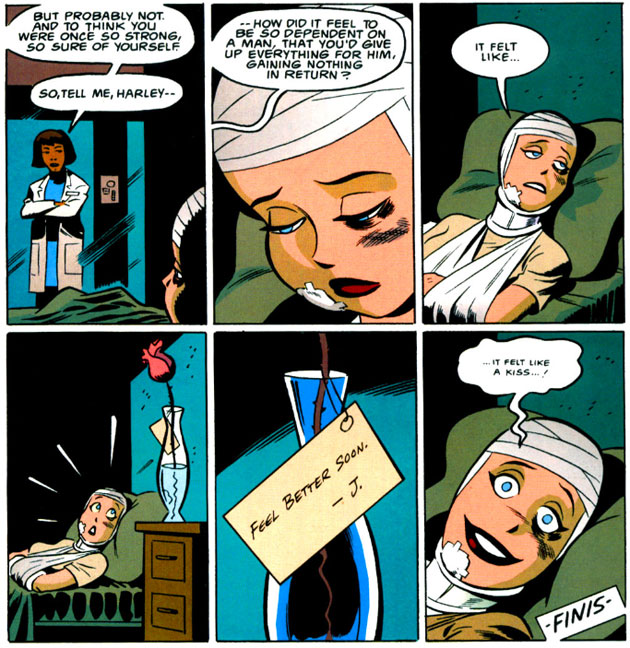Suicide Squad is the most successful August movie in history and it brought many characters unfamiliar to non-comic audiences to the front of pop culture conversation. In the wake of all the buzz, more people than ever are asking “who is Harley Quinn?” Almost anyone with a little geek knowledge can tell you she’s the Joker’s moll, but it’s a much more complicated question than that, fraught with questions of morality, violence, romanticization, sexualization, and perhaps most of all, love. We took the time out to really analyze these issues by viewing them through the lens of what turned out to be a surprisingly large section of comics audiences: Harley Quinn fans who also identified as victims of abuse.
Few characters capture the imagination of on-screen and comic audiences quite like the Joker. He is the longest-standing comic villain and has the most iterations of any of Batman’s rogue gallery, from the big screen to the small. Since the popularity of Batman: The Animated Series, fans have found pleasure in pairing the Clown Prince of Crime with a partner: Harley Quinn. Originally intended to be a one-off henchwoman, Harley was written by Paul Dini and designed by Bruce Timm in 1992. Quinn only appeared in nine episodes to her beau’s 15, but her iconic appearance, personality, and voice has lived on for over 20 years. Quinn has found herself the star of multiple spin-off comics and found further success in the New 52. For comic fans, Harley may be DC’s brightest star. For cosplayers, the Joker and Harley Quinn have found themselves to be two of the most-imitated characters in the Batverse. This success, however, isn’t without it’s critics.
The characters do not have what anyone in their right mind would call a healthy relationship. Harleen Quinzel became Harley Quinn to appease the man she loved, a love most would agree is built around Joker’s manipulation and Harley’s attraction to the psychologically extreme. In 1994’s “Mad Love”, their relationship was explored and given both a back story and a bottom line: love is not always kind, or sane. Harley was a young, capable doctor with no history of crime or mental issues prior to meeting Mr. J. Joker throws Harley out a window, and all it takes is a note attached to some flowers sent to her hospital room to take Harley from “never again” to “whenever he wants.”

Harley’s standalone comics have seen her pairing up (read: sometimes shacking up) with other DC characters, with Poison Ivy often stepping in to fill the clown’s squeaky shoes. Ivy occasionally perpetuates her own brand of manipulation, but she is definitely more of a straight shooter, and is shown to both outwardly care for and reciprocate the feelings of Quinn. In other words, since her inception, Harley has been familiar with abuse, mental, emotional, and physical.
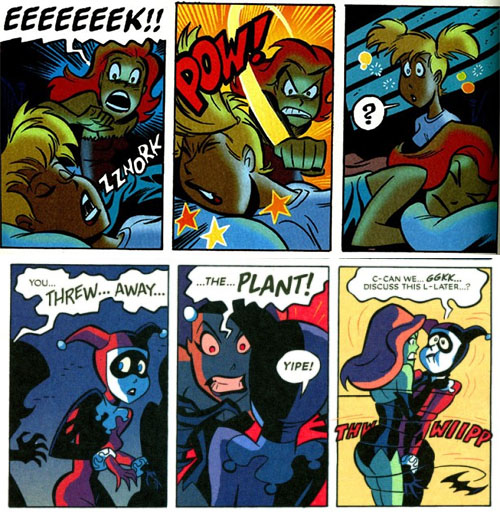
That isn’t to say that Harley doesn’t do her own share of violent things to the ones she cares for. Joker may often take the prize at “most manipulative,” but Harley was a gymnast, and has shown herself to be a capable foe physically. She is also powered up by Ivy in both the Batman: The Animated Series episode “Harley and Ivy” and during “No Man’s Land”, gaining extra strength and agility as well as an immunity to poisons. When the Joker sets her off, it isn’t the Dark Knight she is taking out her aggression on.
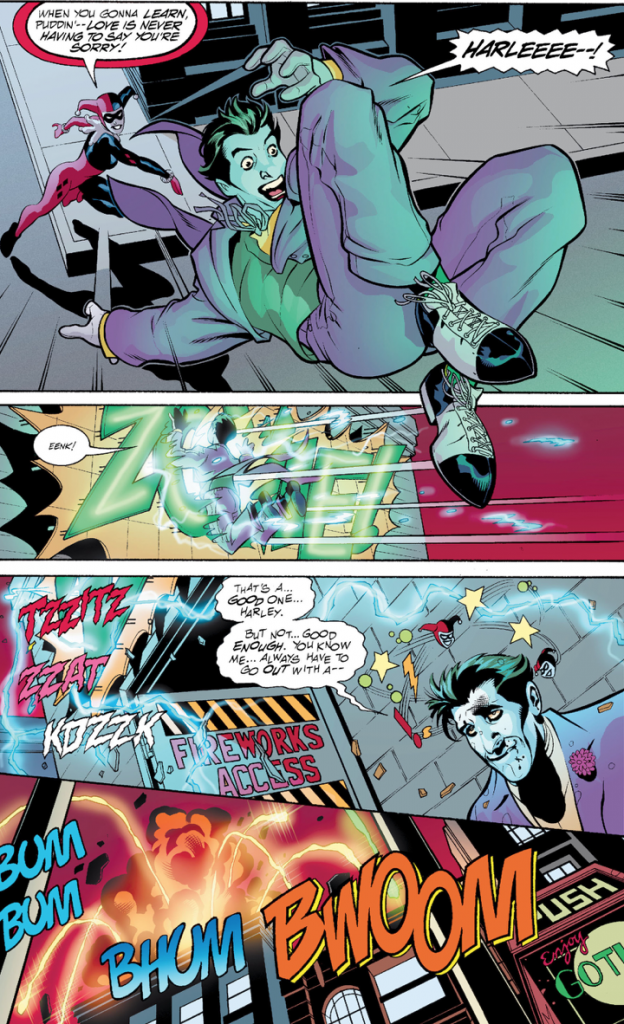
So, who would find these two appealing? Apparently, a lot of DC’s audience. Harley and Joker as a pair are some of the most sought after DC collectibles, and Alex Ross’ recent work, titled “Mind If I Cut In?” depicts the couple seconds after the Caped Crusader steps in on their now-classic pose. The print goes for upwards of $900 dollars and fans seem willing to spend it. Retail stores like Hot Topic sell merchandise of both “Mad Love” and Alex Ross’ work, as well as other products that depict the particularly toxic duo’s relationship as something to be admired.
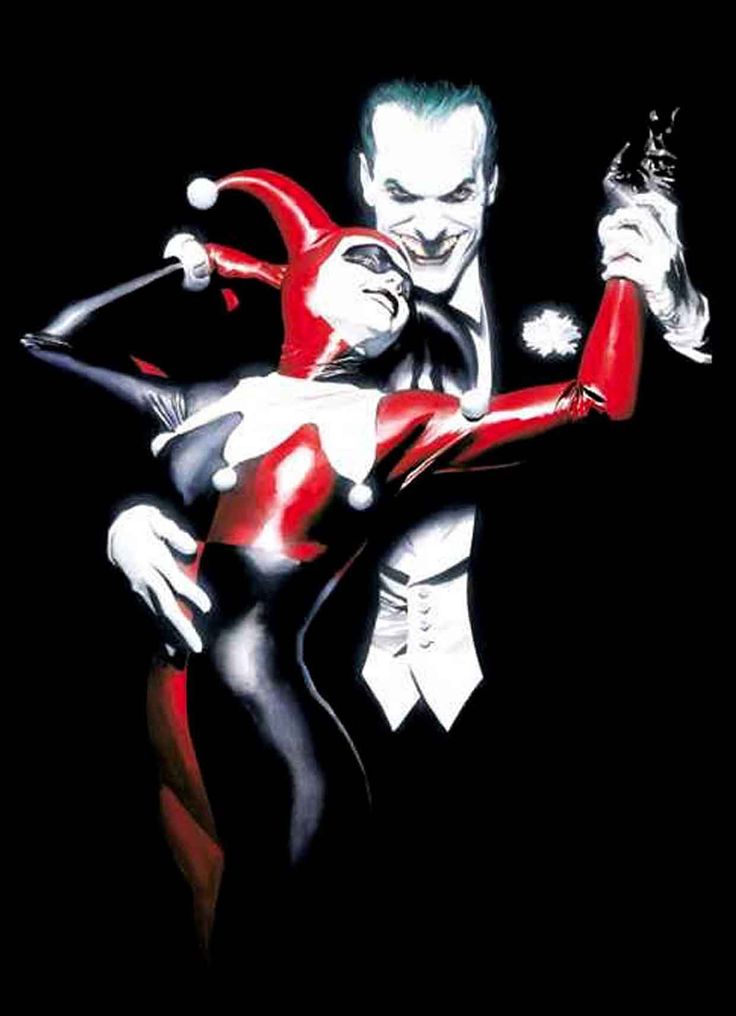
This depiction, as well as countless works of fan art and fiction, has drawn criticism from those who feel that the relationship and it’s romanticization is a detriment to readers. Opposing remarks can be found about couples who cosplay as the grinning lovers. Detractors say that romanticizing the two is a detriment to those who have had abusive relationships, and that cosplay is idolization of a dangerous, problematic pairing. Some have went as far as to say that, if you do not have a history of abuse, you can’t enjoy them.
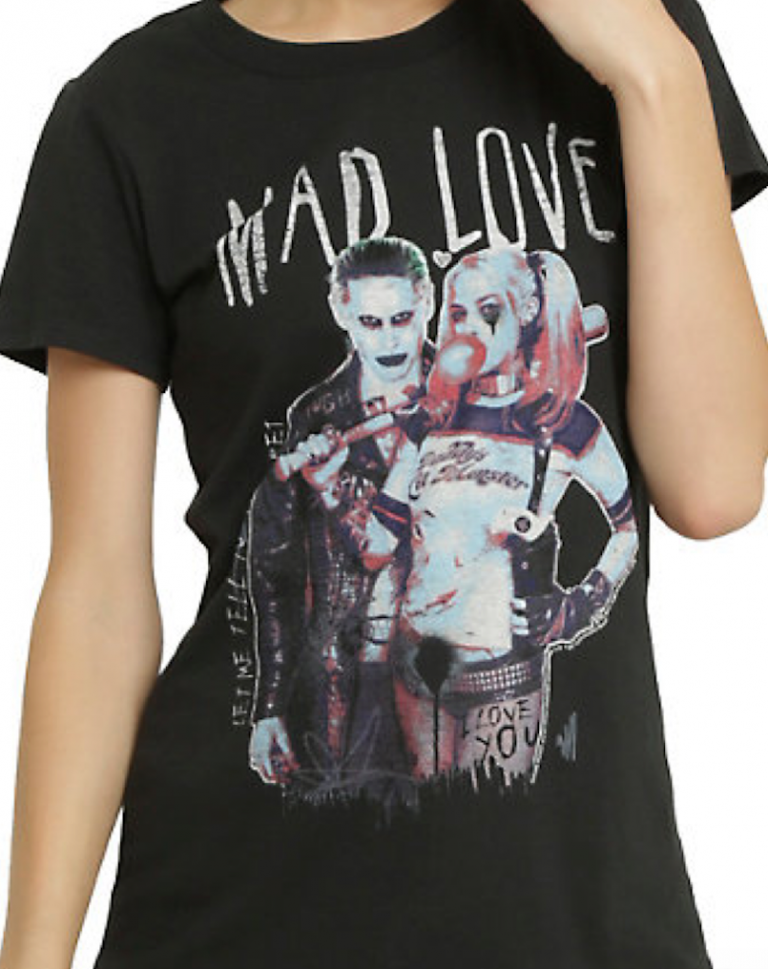
Negative representations of relationships skewed to be romantic aren’t new. Romeo and Juliet have been criticized for pushing dangerous versions of love since long before New York accents and definitely prior to Paul Dini giving one to a girl dressed like a harlequin. “There is tons of violence in Shakespeare, there is nothing wrong with enjoying/appreciating it because it is just art. Just like comics are art,” said Andrew Arkham Cosplay.
So, who are these fans? How do these people deal with the idea that their beloved couple might be a poor example for relationships? We spoke to Joker and Harley cosplayers about their interest in the characters, their history with relationships, and if, and where, the two meet. Trigger warning for anyone reading who might find discussions of abuse, both mental and physical difficult, as this is a discussion with abuse victims about their experience and the ways in which they have found to deal with their past.
In the second part of the three part series, we continue our series of interviews with cosplayers and dive into the world of fictional abuse and it’s significance in real world affinity for characterization. Tune in Monday for more.
Originally posted at HeroesPodcasts.com

